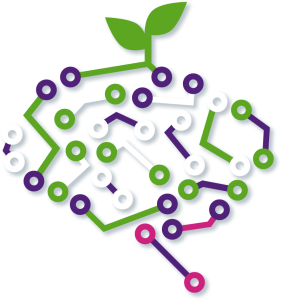Growing up in a Digital World: The implications on men’s mental health from both a lived experience and research perspective.



By Stuart, member of Sprouting Minds Young Person’s Advisory Group, Idrees, member of Sprouting Minds Young Person’s Advisory Group and Jake, Research Associate working on Digital Youth, based in the Department of Child & Adolescent Psychiatry at King’s College London.
Idrees:
Mental health has always been a huge part of my life, from early childhood to adolescence and into my 20s. As a gay man of South Asian descent, I feel my unique experiences have enabled me to gain a more nuanced understanding of how mental health needs may differ among different demographics of men. For example, due to being gay but also being part of the Pakistani Muslim community, I have struggled to reconcile the conflicts resulting from my identity, as it’s not safe for me to be openly gay among the Muslim community. My mental health has taken a hit from this as a result of not being able to live authentically, however growing up in the digital age has resulted in some unique opportunities to improve my overall mental health, connection, and sense of belonging, that otherwise would have been difficult to achieve without digital technology.
For example, I have been able to utilise online platforms to find and meet likeminded people online. On YouTube, I follow people who identify as either LGBT and/or BAME or are allies, and who post video content related to their own experiences which I can relate to myself and give tips to their followers on how to improve their wellbeing and self-esteem, and/or improve their life. This is incredibly valuable to me, as growing up, I didn’t have access to relevant role models, or people who affirmed my identity and supported me unconditionally, and so having the opportunity to find these role models online is invaluable to my mental wellbeing. On Instagram, I have been able to leverage my personal and professional interests and gain a network of likeminded people, including fellow creative industry professionals, members of YPAG groups, LGBT and South Asian people, and other people from marginalised backgrounds. The ease of communication on Instagram in particular has helped me interact with online friends in a seamless way, and helped me feel appreciated, connected, and inspired even when I may not have met these people in real life. Therefore, this demonstrates that social media can be an incredibly powerful tool in fostering an online community when this may be difficult in IRL settings, such as if you live in a small town or are otherwise geographically isolated and disconnected from members of your tribe.
However, it is important to recognise that digital technology and in particular social media has some downsides, in spite of the previously mentioned benefits. A notable example is of the enormous and seemingly endless access to information at your fingertips at any time and the implications this may have. On apps like Instagram and TikTok, one may be exposed to thousands of other people daily, and consume content relating to their lives, image, or interests. Often, people carefully curate their online presence and consuming content vicariously in this manner can negatively impact one’s mental health. I myself in the past would feel self-conscious when viewing images of other young people who seemed to be better looking than me, had a more vibrant social life, or seemed ahead of me financially and professionally. I soon learned that these online personas are not necessarily representative of reality, as people often post their highlights and not the more mundane or low moments of their lives. Also, it is not often easy to prove whether content posted is actually authentic, either in the information presented, or the image being digitally altered. Therefore, it is important to take social media with a grain of salt, and not assume that all you see is actually true. It is a common saying that comparison is the thief of joy, and this applies especially to social media.
Once we can navigate the potential pitfalls of online technology, the outlook for young people is generally positive. We have access to information that previous generations simply could not gain, and therefore once we can use digital media responsibly, we can definitely reap the rewards of technology whilst mitigating the risks. A main aim of mine as a young gay man navigating online spaces is to always seek authentic connection with others, and to follow those accounts who genuinely inspire me to do better as a human. Keeping this a priority has helped me use social media intentionally, as I’ve been able to find role models online who I previously would have had opportunities to meet. This sense of belonging has enabled me to continue to live my life as authentically as I can, whilst still prioritising my safety and wellbeing, both online and offline. I encourage all young people to look to those who inspire them to do better and unfollow those accounts that make them question their value, whether it be physical appearance, professional competence, financial situation, or social life.
Stuart:
I’ve written about my diagnosis, anger and experience of depression. I would like to emphasise that a diagnosis is a privilege many don’t experience and just because you haven’t been diagnosed, doesn’t mean your symptoms (including emotions) are not real.
As a young Black man with migrant parents, there is a lot of literature around the experiences of people who look like me, when accessing mental health services.
I have decided to focus on how ‘social media changed my experience of ill health’ – for both my physical and mental health conditions.
Social media has allowed me to interact with, and observe, a lot of inspirational young people (too many to list); all ages, and different walks of life, to connect, learn and share experiences. Young people have a platform; given or sometimes taken and owned! We are now players at the table too! To share their experiences and lead conversations which would normally happen in the shadows/corners. I believe the impact of this on challenging stigma around health conditions, mostly mental health conditions, is vast. It also breaks down the barriers to communication and promotes a sense of community. I am inspired, daily by other people with lived experience’s stories; how far they have come and the impact they have made. However, I’m conscious that there is a need for more work around the impact of social media on mental health.
Over the years, some of the things I have appreciated from using social media as a person with lived experience;
• Community – Chronic illness is lonely and stripped my confidence. I believe this is true for most people who have experienced a life-changing illness. Through social media, I re-gained a sense of community and learnt a lot about my diagnosis (support groups or individual conversations). For example, I learnt a lot about the side effects of one of the medications I was taking through a conversation with someone based 1000 miles away. Especially as there is a lot of negative text around ‘Dr Google’ and self-diagnosis.
o Patient leader community – It was great to find a community on social media, people with lived experience who want to change services. However, there’s still work to be done to diversify (gender, sexuality, ethnicity, and age) this space. The issues we (sometimes) see in health services; lack of representation, barriers to access etc are sometimes mirrored in virtual and physical safe spaces for people with lived experience.
• I could go at my own pace – A chronic illness journey is never a straight line, and some days are harder than others. On social media, in support groups etc, I was able to step back and ‘lean in’ as much as I needed to
• Adaptability – During the Covid lockdown, my use of support groups was not disrupted – our focus changed but frequency remained the same. I relied on virtual spaces long before the lockdown due to my health conditions.
• Validation – Through meeting other people with similar experiences, there was a sense of legitimacy (which I’ve talked about in another blog) in my own experiences.
o As a member of Sprouting Minds, it is reassuring that NICE guidelines on digital interventions are being explored and updated. There’s overlap between social media and digital interventions. However, these are different issues*
• (Empowered) Self-management – There are a lot of accounts on social media (focusing on different conditions) which provide helpful advice. This was self-management of both my physical and mental health condition informed by other people’s lives experience
Some learning to pass on or points to remember if you are considering or using social media for any of the reasons above;
- When following social media accounts focusing on a similar condition to yours. Remember, although there might be overlap, the person’s experience might differ from yours – this is okay.
- It is okay to step away from some content. As you progress through your recovery journey you might find that you can’t relate to some accounts – maybe this is a good time to unfollow
- You don’t owe anyone your life story! – it is yours to tell how, and when you feel ready.
o Choosing a version to share online is not lying. It is playing safe. This version can change over time. The ‘safe’ stories we tell are sometimes shaped by our experiences.
- We shouldn’t be afraid to have conversations about social media; the good, bad and opportunities for young people and services.
o Talk to someone about concerns you might have about social media.
- Fact-check using trusted sites such as Young Minds, Samaritans, and NHS!
* Earlier in the blog I mentioned the overlap between social media and digital interventions. The following themes; accessibility, uptake & safety are recurring in conversations around mental health & social media or digital interventions. As a researcher or service provider, how do you or can you; amplify the voices of marginalised groups, utilise social media to raise awareness of the support available, address stigma around mental health conditions on social media, harness social media’s wide reach for dissemination of completed, ongoing and future research and address the fear of social media which can dismissive of the positive experiences some have had?
Jake:
Men’s mental health is an important topic that is rarely spoken about – even among good friends. This is suggested to be due to two types of stigma (Chatmon, 2020) – social stigma (negative attitudes or disapproval towards those living with mental health issues) and self-stigma (the shame or embarrassment felt by the person living with mental health difficulties).
These stigma’s both come from a desire to follow masculine norms – the expected behaviours that guide our behaviour in everyday situations (Sherif, 1936). For example, these masculine norms range from simple annoyances (e.g., “boys don’t wear pink”), to others clearly more harmful (e.g., “boys don’t cry”; Mahalik et al., 2003). Many lead to toxic masculinity, which is reinforced by repressing apparently undesirable male behaviour (e.g., showing fear, crying, or talking about emotions). Following these masculine norms may worsen existing mental health difficulties and lead to drug/alcohol abuse, heart disease, violence, and homophobia (Chatmon, 2020).
With these masculine norms in mind, it is understandable why rates of death by suicide are reported to be up to five times higher in men compared to women (Chandler, 2019). In 2017, Samaritans (a charity which provides support to those at risk of suicide) reported that suicide was the leading cause of death of men aged 35 to 54 (Scowcroft, 2017). For some groups of men, this risk of suicide is even higher, with less wealthy men in deprived areas 10 times more likely to die by suicide than wealthier men (Platt, 2011). The risk of belonging to LGBTQIA+ groups is also higher, particularly for those within the transgender community (McDermott & Roen, 2016).
It is important to note that these masculine norms which restrict emotional disclosure and discussion of men’s mental health (and subsequently worsen the mental health of men) are also reinforced digitally through social media sites, leading to harmful comparisons with others that damage self-esteem (particularly in individuals that use social media the most; Vogel, Rose, Roberts, & Eckles, 2014). However, we must also recognise that, in addition to the risks, social media also provides tools that allow men to explore and discuss their feelings with others in a way that may not be possible within their immediate in-person community. Specifically, social media gives a man struggling to cope with their mental health the opportunity to find and create online communities of like-minded people where they would have previously felt ostracised and excluded (Allen et al., 2014). While researching social isolation and social media use, Choi and Noh (2020) reported that using social media was related to lower social isolation and a move negative attitude towards suicide. As such, the social connectedness (and lowered risk to health) these online communities provide is something to be celebrated – though it is currently largely overlooked.
Clearly, although social media and other online sites can be harmful to the mental health of men (as they can reinforce the harmful masculine norms in our society), they also provide opportunities for social support which would not otherwise be available to them. This is something that needs to change. It is hoped that the continued growth of these supportive online communities will eventually erode the stigmas which present a life-threatening risk to men. The question that remains is how can we maximise the positive influences of these supportive online communities while minimising those that are toxic and harmful?
References:
Allen, K. A., Ryan, T., Gray, D. L., McInerney, D. M., & Waters, L. (2014). Social media use and social connectedness in adolescents: The positives and the potential pitfalls. The Educational and Developmental Psychologist, 31(1), 18-31.
Chandler, A. (2019). Boys don’t cry? Critical phenomenology, self-harm and suicide. The Sociological Review, 67(6), 1350–1366.
Chatmon, B. N. (2020). Males and mental health stigma. American journal of men’s health, 14(4), 1557988320949322.
Choi, D. H., & Noh, G. Y. (2020). The influence of social media use on attitude toward suicide through psychological well-being, social isolation, and social support. Information, communication & society, 23(10), 1427-1443.
Sherif, M. (1936). The psychology of social norms. New York: Harper
Mahalik, J. R., Locke, B. D., Ludlow, L. H., Diemer, M. A., Scott, R. P., Gottfried, M., & Freitas, G. (2003). Development of the conformity to masculine norms inventory. Psychology of men & masculinity, 4(1), 3.
McDermott E., Roen K. (2016). Queer youth, suicide and self-harm: Troubled subjects, troubling norms. Basingstoke, UK: Palgrave Macmillan.
Milner, A., Kavanagh, A., King, T., & Currier, D. (2018). The influence of masculine norms and occupational factors on mental health: Evidence from the baseline of the Australian longitudinal study on male health. American Journal of Men’s Health, 12(4), 696–705.
Platt S. (2011). Inequalities and suicidal behaviour. In O’Connor R. C., Platt S., Gordon J. (Eds.), International handbook of suicide prevention: Research, policy and practice (pp. 211–234). Oxford, UK: Wiley-Blackwell.
Scowcroft E. (2017). Suicide statistics report 2017. London, UK: Samaritans.
Vogel, E. A., Rose, J. P., Roberts, L. R., & Eckles, K. (2014). Social comparison, social media, and self-esteem. Psychology of Popular Media Culture, 3(4), 206–222.
About the authors:
Idrees is a member of Sprouting Minds, the Digital Youth young person’s advisory group (YPAG) and alongside being a Sprout he is also a freelance motion graphics designer. He enjoys participating in YPAG meetings, as well as attending in-person events such as the Digital Youth Programme meeting in May, where he was able to share his input with researchers and get a feel for the process of digital mental health research. His main hobbies are gardening and fitness. Idrees got involved with Sprouting Minds because it enabled him to utilise some of his own experiences with mental health in a way that is productive and fulfilling. He also loves the idea of empowering others, and also boosting his own self esteem through his involvement.
Stuart is also a member of Sprouting Minds and has been working with our researchers on the design and development of a serious online game for young people with depression. Stuart’s experience of co-production is influenced by his own lived experience of mental health and a chronic health condition and involvement in national advisory groups for a range of organisations including the Care Quality Commission (CQC), National Institute of Health Research (NIHR) and the Mental Health Foundation. Stuart brings five years of project management experience from lived experience research and co-production projects. He is committed to ensuring people are meaningfully involved in co-design and co-delivery of the services and strategy that influence their lives.
Jake is a Research Associate working on Digital Youth research project 3, which is focused on digital engagement and mental health risks in vulnerable children. His research investigates how children’s internet usage affects their depression and anxiety, as well as eating behaviours and self-harming. He is based at Kings College London.
This blog expresses the personal views and lived experience of Stuart and Idrees and does not represent the opinion of Sprouting Minds or the UKRI Digital Youth Programme. If you were affected by this blog and would like to seek advice and support around issues it raised you can contact the following links:


